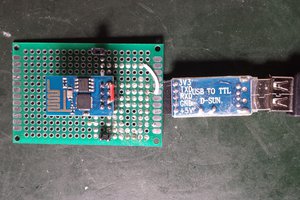The Arduino initializes the Ethernet Module and shows a link or not. It then tries to get a DHCP address (if none defaults to stored IP and warns you). Then it connects to Google DNS at 8.8.4.4 and looks up our friendly neighborhood time server "0.pool.ntp.org" (if it can't find it it warns you). Finally it makes a web connection to "www.google.com" (if it can't it warns). So all green lights mean that we got an IP and we can see then internet!
SunFounder ENC28J60 Ethernet LAN Network Module For Arduino SPI AVR PIC LPC STM32
 Kristopher Marciniak
Kristopher Marciniak






 nGoline
nGoline
 Mishel George
Mishel George

 dkt01
dkt01
Am I missing something, I don't see the how-to hook up all the wires? Those 3 steps seem vague to me. Are there better details somewhere?